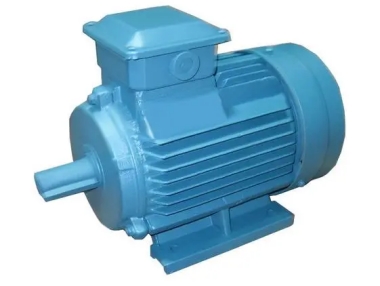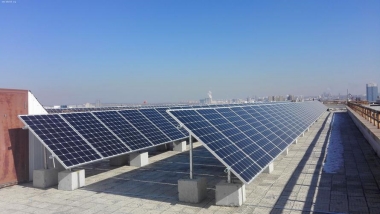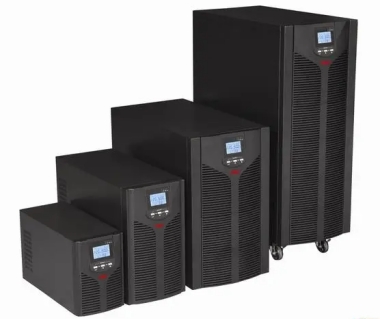THYRISTOR MODULES (NON-ISOLATED TYPE)
| Features | Typical Application | PDDN-Notes |
|
|
|
MTG(AA) MTY(AA)
| Type | IT[AV]/IF[AV] [A] | VDRM/VRRM [V] | IDRM/IRRM [mA] | IGT [mA] | VGT [V] | IH [mA] | dv/dt [V/us] | di/dt [A/us] | ITSM [kA] | Datasheet | Offer |
|---|---|---|---|---|---|---|---|---|---|---|---|
| PDDN-MTx60 | 60 | 200-600 | 6 | 100 | 2.5 | 150 | 800 | 100 | 2.1 | Request | |
| PDDN-MTx80 | 80 | 200-600 | 8 | 100 | 2.5 | 150 | 800 | 100 | 2.7 | Request | |
| PDDN-MTx100 | 100 | 200-600 | 8 | 100 | 2.5 | 150 | 800 | 100 | 3.4 | Request | |
| PDDN-MTx130 | 130 | 200-600 | 12 | 150 | 2.5 | 200 | 800 | 100 | 4.5 | Request | |
| PDDN-MTx160 | 160 | 200-600 | 12 | 150 | 2.5 | 200 | 800 | 100 | 5.6 | Request | |
| PDDN-MTx200 | 200 | 200-600 | 15 | 150 | 2.5 | 200 | 800 | 100 | 7 | Request |
MTG MTY
| Type | IT[AV]/IF[AV] [A] | VDRM/VRRM [V] | IDRM/IRRM [mA] | IGT [mA] | VGT [V] | IH [mA] | dv/dt [V/us] | di/dt [A/us] | ITSM [kA] | Datasheet | Offer |
|---|---|---|---|---|---|---|---|---|---|---|---|
| PDDN-MTx50 | 50 | 800-1800 | 8 | 100 | 2.5 | 150 | 800 | 100 | 1.6 | Request | |
| PDDN-MTx100 | 100 | 800-1800 | 12 | 100 | 2.5 | 150 | 800 | 100 | 3.2 | Request | |
| PDDN-MTx150 | 150 | 800-1800 | 12 | 100 | 2.5 | 150 | 800 | 100 | 5.1 | Request | |
| PDDN-MTx200 | 200 | 800-1800 | 20 | 150 | 2.5 | 200 | 800 | 100 | 6.5 | Request | |
| PDDN-MTx250 | 250 | 800-1800 | 20 | 150 | 2.5 | 200 | 800 | 100 | 8.5 | Request | |
| PDDN-MTx300 | 300 | 800-1800 | 25 | 150 | 2.5 | 200 | 800 | 100 | 9.6 | Request |
Overview of Thyristor Module (Non-Isolated Type):
The thyristor module is a high-power switching semiconductor device that integrates control circuits, thyristors, and heat sinks to achieve efficient and precise control of the AC power supply—equipped with silicon rectifier device characteristics, suitable for high voltage and high current environments and controlled by gate current for conduction and cutoff. This module is small in size, lightweight, and resistant to vibration. It comes in various types, such as fast, bidirectional, reverse guidance, and optical control. Nonisolated types should pay attention to safety, and the radiator should be maintained in operation. The thyristor module is a vital power control device, widely used, and requires attention to safety and heat dissipation when used.
Characteristics of Thyristor Module (Non-Isolated Type):
1. High reliability: The thyristor module adopts multiple stable semiconductor components, ensuring its long-term reliability.
2. Low power consumption: In terms of control circuits, the thyristor module adopts advanced circuit design and manufacturing technology, achieving efficient control while reducing energy consumption.
3. Quick response: Its control circuit has a fast response speed and can quickly control the power output.
4. Widely applicable scenarios: can be applied in multiple fields such as industrial automation, household appliances, power electronics, etc., with a wide range of applications.
5. Low voltage three-phase: capable of withstanding high surge currents up to 2500A @ 60Hz.
6. Easy installation: The non-isolated thyristor module mounting base is a common anode, making the installation process more convenient.
Application of Thyristor Module (Non-Isolated Type):
1. AC speed controller: The thyristor module can be used to operate the speed of three-phase AC motors, achieve step-less speed regulation of the motor, and improve the efficiency and control accuracy of the motor.

(The thyristor module is used to control the speed of three-phase AC motors)
2. Inverter: Non-isolated thyristor modules play an essential role in inverters, converting direct current into alternating current to achieve efficient power conversion, especially in the fields of solar power generation, wind power generation, etc.

(Solar power)
3. UPS power supply: UPS power supply is used to ensure the stable power supply of the power system, achieve fast switching and sound output of electricity, and ensure the safe and regular operation of the power system. The thyristor module plays a crucial role here.

(UPS power supply)
4. Power control: The thyristor module can adjust voltage and current and control electrical power, so it is widely used in electrical systems, such as electronic igniters, potentiometers, electronic speed control devices, voltage stabilizers, and generator regulation.
5. AC voltage regulation: The thyristor module can also be used to regulate AC voltage; for example, in AC dimming applications, it can adjust the voltage of the lamp, thereby adjusting the brightness of the light. In motor control, it is necessary to adjust the voltage and power of the motor and control the starting, stopping, speed, and inverter functions of the engine.

Company Profile
PDDN Photoelectron Technology Co., Ltd.(sales@pddn.com) is a high-tech enterprise focusing on the manufacturing, R&D, and sales of power semiconductor devices. Since its establishment, the company has been committed to providing high-quality, high-performance semiconductor products to customers worldwide to meet the needs of the evolving power electronics industry.
It accepts payment via Credit Card, T/T, West Union, and Paypal. PDDN will ship the goods to clients overseas through FedEx and DHL, by sea, or by air. Please inquire if you want a high-quality Thyristor Module (Non-Isolated Type); we will help.
Payment Methods of Thyristor Module (Non-Isolated Type)
L/C, T/T, Western Union, Paypal, Credit Card etc.
Shipment of Thyristor Module (Non-Isolated Type)
By sea, by air, by express, as customers request.
Storage Conditions for the Thyristor Module (Non-Isolated Type)
1. Temperature control: The thyristor module should be laid in a dry and well-ventilated environment to escape high or low temperatures. The ideal storage temperature range is usually -25 ° C to +85 ° C, but it is best to refer to the specific module's data manual for the most accurate recommendations.
2. Humidity control: High humidity may cause corrosion or short circuits inside the module. Therefore, it is recommended to store the thyristor module in an environment with low relative humidity, usually at most 70%.
3. Avoid mechanical impact: Although the thyristor module has specific vibration resistance characteristics, strong mechanical impact or vibration should still be avoided as much as possible during storage and handling to prevent damage to internal components.
4. Dust and pollution prevention: Ensure that the module is stored in a clean environment to prevent dust, dirt, or other pollutants from entering the interior of the module. If long-term storage is necessary, it is recommended to use a dust cover or bag to protect the module.
5. Avoid static electricity: Static electricity may cause damage to electronic components. When handling thyristor modules, appropriate electrostatic protection measures should be taken, such as using anti-static workbenches and tools.
6. Power isolation: For non-isolated thyristor modules, special attention should be paid to the isolation of power lines. During storage, it should be ensured that the power terminal of the module is isolated from devices that may generate high voltage or current to prevent accidental triggering or damage.
7. Regular inspection: Even if the module is in storage, its appearance and performance should be checked regularly to ensure that it is in good condition. If any abnormalities or damages are found, they should be dealt with or replaced immediately.
FAQ
Q1
What are the significant advantages and disadvantages of non-isolated thyristor modules compared to isolated thyristor modules?
Re:Compared with isolated thyristor modules, the advantages of non-isolated thyristor modules mainly include their simple circuit design and lower cost, as they do not require additional isolation circuits. However, the disadvantage is also evident, as the lack of electrical isolation may lead to safety issues such as electric shock and short circuits.
Q2
What safety issues should be considered in circuit design for non-isolated thyristor modules?
Re:The primary safety issue that must be considered when using non-isolated thyristor modules in circuit design is the lack of electrical isolation. To prevent potential electrical shocks and short circuits, it is necessary to ensure sufficient insulation distance between the module and other circuit parts and take appropriate protective measures, such as using insulation materials, installing protective covers, etc.
Q3
What is the efficiency and stability of non-isolated thyristor modules in practical applications?
Re:In practical applications, the efficiency and stability of non-isolated thyristor modules usually depend on multiple factors, including circuit design, working environment, load conditions, etc. Generally speaking, if designed properly and the working environment is suitable, non-isolated thyristor modules can exhibit good efficiency and stability. However, it should be noted that due to its lack of electrical isolation, it may not be as reliable as isolated thyristor modules in particular application scenarios.
Q4
How do you troubleshoot and repair non-isolated thyristor modules?
Re:When troubleshooting and repairing non-isolated thyristor modules, it is usually necessary to first check their power and load conditions to ensure they are within normal range. Then, testing tools such as a multimeter can be used to monitor the input and outlet voltage and current of the module to determine if it is working correctly. If a malfunction is found, it may be necessary to replace the damaged components or the entire module.
Q5
What is the performance of non-isolated thyristor modules in high-frequency working environments?
Re:In high-frequency working environments, the performance of non-isolated thyristor modules may be affected. High-frequency operation may lead to an increase in heat accumulation inside the module, thereby affecting its stability and efficiency. Therefore, in high-frequency application scenarios, it is necessary to pay special attention to the heat dissipation problem of the module and take appropriate measures to ensure its regular operation, such as increasing heat sinks, reducing operating frequency, etc.
Opening Time
- Sunday – Friday: 09:00am – 10:30pm
- Saturday: 10:00am – 02:00pm
Contact Info.
- Email: sales@pddn.com
- Mobile: +86 18837951818
Contact Address
- Tongrun photoelectron, 3rd Floor, Nanshan Science Park, Nanshan District, Shenzhen, Guangdong, China
